 Scarlett O'Hara's green curtain dress -- perhaps the most famous costume in Hollywood history -- is among three original outfits appearing in an exhibition marking the 75th anniversary of the 1939 movie classic "Gone With the Wind." The exhibit opens Tuesday, September 9, at the Harry Ransom Center at the University of Texas at Austin, detailing the three-plus years it took to bring Margaret Mitchell's best-selling novel to the screen. It runs through January 4.
Scarlett O'Hara's green curtain dress -- perhaps the most famous costume in Hollywood history -- is among three original outfits appearing in an exhibition marking the 75th anniversary of the 1939 movie classic "Gone With the Wind." The exhibit opens Tuesday, September 9, at the Harry Ransom Center at the University of Texas at Austin, detailing the three-plus years it took to bring Margaret Mitchell's best-selling novel to the screen. It runs through January 4.  In an iconic scene from the movie, Scarlett (Vivien Leigh) yanks down her mother's curtains for Mammy (Hattie McDaniel) to make a fancy dress to impress Rhett Butler and try to persuade him to give her $300 to pay the taxes on her plantation. "The curtain dress has a special place in everyone's hearts," says Jill Morena, the Ransom Center's assistant curator for costumes and personal effects.
In an iconic scene from the movie, Scarlett (Vivien Leigh) yanks down her mother's curtains for Mammy (Hattie McDaniel) to make a fancy dress to impress Rhett Butler and try to persuade him to give her $300 to pay the taxes on her plantation. "The curtain dress has a special place in everyone's hearts," says Jill Morena, the Ransom Center's assistant curator for costumes and personal effects.  Scarlett's burgundy ball gown, another original costume on display, is an example of producer David O. Selznick's push for "show-stopping glamour," curator Morena says. "It's really visually compelling on-screen in a tense moment," she says of the shocking outfit Scarlett wears to Ashley's birthday party. "Vivien Leigh just looks stunning in the dress."
Scarlett's burgundy ball gown, another original costume on display, is an example of producer David O. Selznick's push for "show-stopping glamour," curator Morena says. "It's really visually compelling on-screen in a tense moment," she says of the shocking outfit Scarlett wears to Ashley's birthday party. "Vivien Leigh just looks stunning in the dress."  Hattie McDaniel received the best supporting actress Oscar for her role as Mammy, becoming the first African-American to win an Academy Award. "She brought something to the performance that really stood out," says Steve Wilson, the exhibition curator. However, segregation in the South prevented the actress from attending the movie's December 1939 premiere in Atlanta with other celebrities.
Hattie McDaniel received the best supporting actress Oscar for her role as Mammy, becoming the first African-American to win an Academy Award. "She brought something to the performance that really stood out," says Steve Wilson, the exhibition curator. However, segregation in the South prevented the actress from attending the movie's December 1939 premiere in Atlanta with other celebrities. 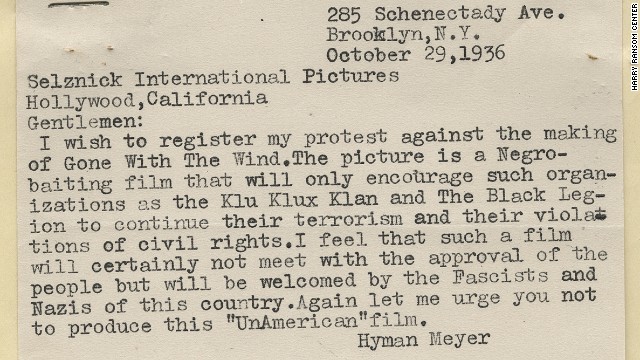 An October 1936 letter from a Brooklyn, New York, man urged Selznick not to make "a Negro-baiting film" that would encourage groups such as the Ku Klux Klan. The depiction of African-Americans and treatment of Reconstruction in the novel made the film production controversial from the beginning. Selznick wanted to remain faithful to the book, but he dropped the N-word from the movie's script as well as references to the Klan.
An October 1936 letter from a Brooklyn, New York, man urged Selznick not to make "a Negro-baiting film" that would encourage groups such as the Ku Klux Klan. The depiction of African-Americans and treatment of Reconstruction in the novel made the film production controversial from the beginning. Selznick wanted to remain faithful to the book, but he dropped the N-word from the movie's script as well as references to the Klan. 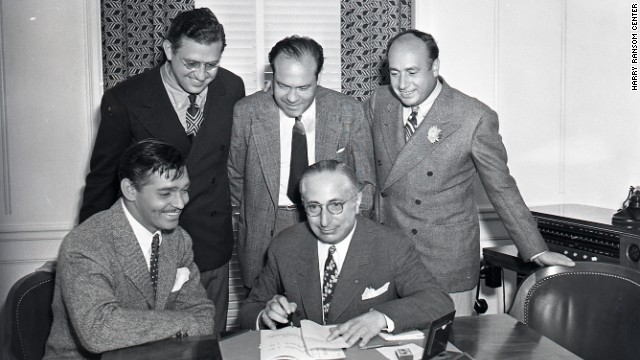 For publicity purposes, Clark Gable, the overwhelming popular choice to play Rhett Butler, pretends to sign a contract for the film under the watchful eye of producer Selznick, standing, far left, and MGM studio chief Louis B. Mayer, seated right. The star had been reluctant to tackle the role, fearing he wouldn't be able to live up to the public's expectations. With Gable now available, Selznick had to move quickly to start filming.
For publicity purposes, Clark Gable, the overwhelming popular choice to play Rhett Butler, pretends to sign a contract for the film under the watchful eye of producer Selznick, standing, far left, and MGM studio chief Louis B. Mayer, seated right. The star had been reluctant to tackle the role, fearing he wouldn't be able to live up to the public's expectations. With Gable now available, Selznick had to move quickly to start filming.  With no Scarlett yet cast, Selznick, right, and director George Cukor kick off filming with scenes of the burning of Atlanta in December 1938. In "A Star Is Born" moment, Selznick's brother, a famous agent, arrived on the set later with Vivien Leigh. The British actress, then unknown to American audiences, would wow both Selznick and Cukor and soon win the role of a lifetime.
With no Scarlett yet cast, Selznick, right, and director George Cukor kick off filming with scenes of the burning of Atlanta in December 1938. In "A Star Is Born" moment, Selznick's brother, a famous agent, arrived on the set later with Vivien Leigh. The British actress, then unknown to American audiences, would wow both Selznick and Cukor and soon win the role of a lifetime.  A green velvet dressing gown -- known informally as the "no more babies" dress -- is the third of the original costumes on display at the Ransom Center. The center raised $30,000 in 2010 to help support conservation work on the dresses. Designer Walter Plunkett was the go-to guy in Hollywood for historical costumes, Morena says, noting his ability to mesh period accuracy of the 1860s and 1870s with the fashion sensibilities of the 1930s.
A green velvet dressing gown -- known informally as the "no more babies" dress -- is the third of the original costumes on display at the Ransom Center. The center raised $30,000 in 2010 to help support conservation work on the dresses. Designer Walter Plunkett was the go-to guy in Hollywood for historical costumes, Morena says, noting his ability to mesh period accuracy of the 1860s and 1870s with the fashion sensibilities of the 1930s.  Scarlett's wedding gown is one of two replicas appearing in the exhibition. This dress and a blue velvet peignoir the character wears in her daughter's death scene were deemed too delicate and fragile for conservation efforts. In the film, the wedding dress appears bulky and ill-fitting on Scarlett, who has rushed into marriage with Charles Hamilton, borrowing her mother's gown.
Scarlett's wedding gown is one of two replicas appearing in the exhibition. This dress and a blue velvet peignoir the character wears in her daughter's death scene were deemed too delicate and fragile for conservation efforts. In the film, the wedding dress appears bulky and ill-fitting on Scarlett, who has rushed into marriage with Charles Hamilton, borrowing her mother's gown.  Leigh celebrates winning the best actress Oscar with Selznick at the Academy Awards ceremony in 1940. "Gone With the Wind" also took home top honors for best picture and director, and the producer received the Irving G. Thalberg Memorial Award for career achievement. "Selznick was the primary artistic influence on the film. He really pushed everyone," says Wilson, the exhibition curator. "His hand touched everything."
Leigh celebrates winning the best actress Oscar with Selznick at the Academy Awards ceremony in 1940. "Gone With the Wind" also took home top honors for best picture and director, and the producer received the Irving G. Thalberg Memorial Award for career achievement. "Selznick was the primary artistic influence on the film. He really pushed everyone," says Wilson, the exhibition curator. "His hand touched everything."
- Exhibit marks 75th anniversary of making of 1939 movie classic "Gone With the Wind"
- "The curtain dress is the star of the show," exhibit curator says of original costume on display
- Divisive in 1930s, portrayal of African-American characters still problematic, professors say
- "The story of the making of 'Gone With the Wind' is the story of the Depression," curator says
Editor's note: "The Making of 'Gone With the Wind' " opens Tuesday and runs through January 4 at the Harry Ransom Center at the University of Texas at Austin. The exhibition features a Web-related component and a companion book.
(CNN) -- Like her green curtain dress, Scarlett O'Hara may be slightly tattered and worn, but she refuses to become a relic of the past.
The two remain deeply embedded in American popular culture, inspiring references in everything from a Carol Burnett sketch to "RuPaul's Drag Race."
That dress reveals Scarlett's resilience, resourcefulness and survival instinct -- traits that may explain the enduring popularity of Margaret Mitchell's Civil War romance novel and its blockbuster movie adaptation.
The Southern belle and her iconic dress will be at the center of an exhibit opening Tuesday to mark the 75th anniversary of the 1939 film. "The Making of 'Gone With the Wind' " will run through January 4 at the Harry Ransom Center at the University of Texas at Austin.
"The curtain dress is the star of the show. She looks just terrific," exhibition curator Steve Wilson says of the Walter Plunkett design, perhaps the most famous costume in Hollywood history.
World's top 20 museums

 Benedict Cumberbatch, left, and Chiwetel Ejiofor appear in "12 Years a Slave," which won the Oscar for best picture in 2013. For more than 80 years, the Academy of Motion Picture Arts and Sciences has been designating one film the best motion picture of the year. Some of the winners have become classics, while others have been forgotten by all but trivia diehards.
Benedict Cumberbatch, left, and Chiwetel Ejiofor appear in "12 Years a Slave," which won the Oscar for best picture in 2013. For more than 80 years, the Academy of Motion Picture Arts and Sciences has been designating one film the best motion picture of the year. Some of the winners have become classics, while others have been forgotten by all but trivia diehards. 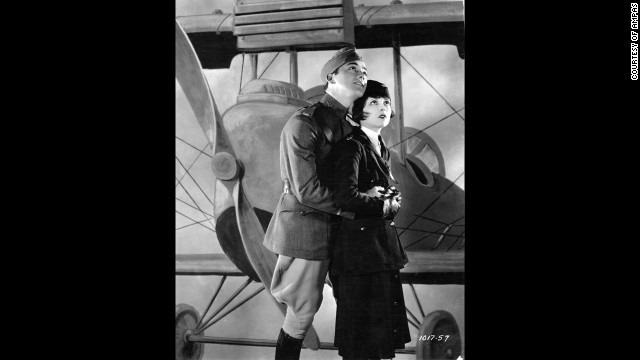 The first Academy Awards were given out at a dinner on May 16, 1929. The best picture winner was 1927's "Wings," a film about World War I pilots starring Clara Bow, right, Charles "Buddy" Rogers, left, Richard Arlen and Gary Cooper. Even today, the silent film's aerial sequences stand out as some of the most exciting ever filmed. Another film, "Sunrise," was given an Oscar as most "unique and artistic production," an honor that was eliminated the next year. The academy didn't begin using a calendar year for awards until movies made in 1934 (with ceremonies held in 1935).
The first Academy Awards were given out at a dinner on May 16, 1929. The best picture winner was 1927's "Wings," a film about World War I pilots starring Clara Bow, right, Charles "Buddy" Rogers, left, Richard Arlen and Gary Cooper. Even today, the silent film's aerial sequences stand out as some of the most exciting ever filmed. Another film, "Sunrise," was given an Oscar as most "unique and artistic production," an honor that was eliminated the next year. The academy didn't begin using a calendar year for awards until movies made in 1934 (with ceremonies held in 1935). 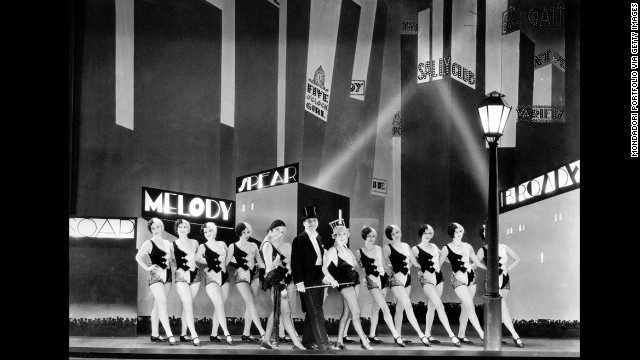 The musical "The Broadway Melody" was the first sound film to win best picture. The film stars Charles King, Anita Page and Bessie Love.
The musical "The Broadway Melody" was the first sound film to win best picture. The film stars Charles King, Anita Page and Bessie Love.  "All Quiet on the Western Front," best picture of 1929-30, was the film adaptation of Erich Maria Remarque's classic novel. The film stars Lewis Wolheim and Lew Ayres and was directed by Lewis Milestone.
"All Quiet on the Western Front," best picture of 1929-30, was the film adaptation of Erich Maria Remarque's classic novel. The film stars Lewis Wolheim and Lew Ayres and was directed by Lewis Milestone. 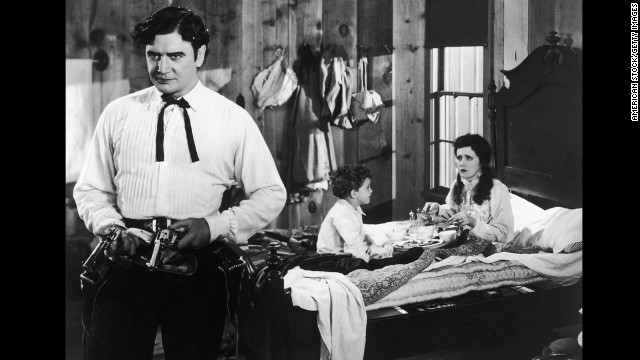 "Cimarron," based on the Edna Ferber novel, is best remembered for its portrayal of the 1889 Oklahoma Land Rush, which literally featured a cast of thousands. Richard Dix and Irene Dunne star in the film.
"Cimarron," based on the Edna Ferber novel, is best remembered for its portrayal of the 1889 Oklahoma Land Rush, which literally featured a cast of thousands. Richard Dix and Irene Dunne star in the film. 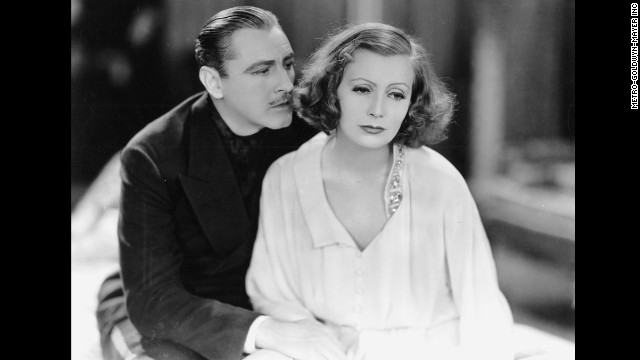 The all-star cast of "Grand Hotel," including Greta Garbo and John Barrymore (pictured), portrayed characters in a mix of plot lines at a Berlin hotel. The film won just the one Oscar, but has been immortalized for one of Garbo's lines of dialogue: "I want to be alone."
The all-star cast of "Grand Hotel," including Greta Garbo and John Barrymore (pictured), portrayed characters in a mix of plot lines at a Berlin hotel. The film won just the one Oscar, but has been immortalized for one of Garbo's lines of dialogue: "I want to be alone."  "Cavalcade," based on a Noel Coward play, won the 1932-33 prize for best picture. The film follows a London family from 1899 to 1933 and stars, left to right, Una O'Connor, Diana Wynyard and Clive Brook.
"Cavalcade," based on a Noel Coward play, won the 1932-33 prize for best picture. The film follows a London family from 1899 to 1933 and stars, left to right, Una O'Connor, Diana Wynyard and Clive Brook. 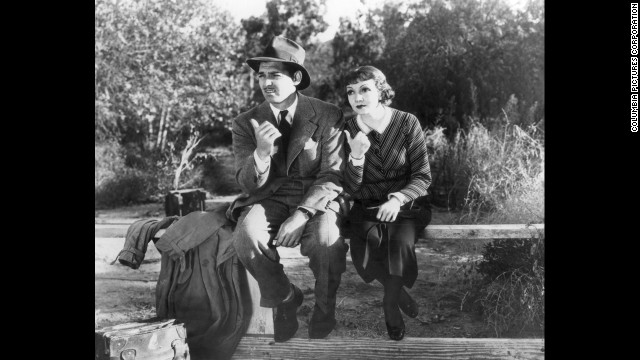 "It Happened One Night" was one of the great underdog winners. Its studio, Columbia, wasn't considered one of the majors at the time, and neither Clark Gable nor Claudette Colbert, its stars, were excited about the project. But it became the first film to sweep the five major categories of picture, actor, actress, director and screenplay. To this day, only two other films -- "One Flew Over the Cuckoo's Nest" (1975) and "The Silence of the Lambs" (1991) -- have pulled off the same trick.
"It Happened One Night" was one of the great underdog winners. Its studio, Columbia, wasn't considered one of the majors at the time, and neither Clark Gable nor Claudette Colbert, its stars, were excited about the project. But it became the first film to sweep the five major categories of picture, actor, actress, director and screenplay. To this day, only two other films -- "One Flew Over the Cuckoo's Nest" (1975) and "The Silence of the Lambs" (1991) -- have pulled off the same trick.  Clark Gable was in the best picture winner the next year as well, playing Fletcher Christian in the 1935 version of "Mutiny on the Bounty." Charles Laughton plays Captain Bligh.
Clark Gable was in the best picture winner the next year as well, playing Fletcher Christian in the 1935 version of "Mutiny on the Bounty." Charles Laughton plays Captain Bligh. 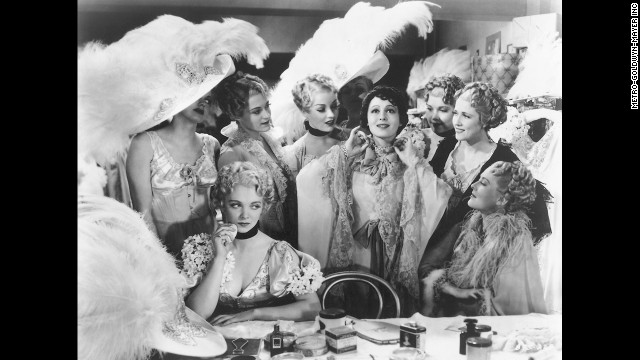 Luise Rainer stars in "The Great Ziegfeld." She picked up an Oscar for best actress, though William Powell, who played the title figure, came up empty (although he was nominated for another movie, "My Man Godfrey").
Luise Rainer stars in "The Great Ziegfeld." She picked up an Oscar for best actress, though William Powell, who played the title figure, came up empty (although he was nominated for another movie, "My Man Godfrey"). 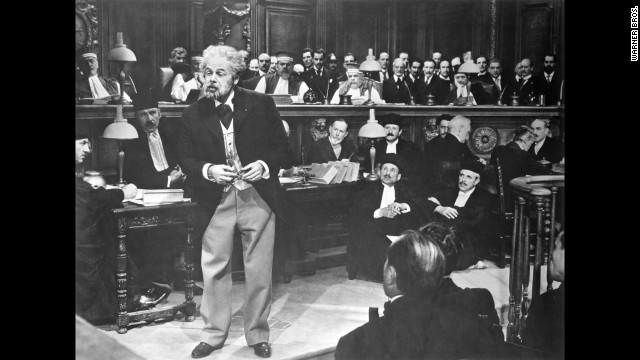 "The Life of Emile Zola" won three Oscars, including best picture. The film is a biography of the famed French author. Star Paul Muni was nominated for best actor but lost to Spencer Tracy ("Captains Courageous").
"The Life of Emile Zola" won three Oscars, including best picture. The film is a biography of the famed French author. Star Paul Muni was nominated for best actor but lost to Spencer Tracy ("Captains Courageous").  "You Can't Take It With You" is one of the rare comedies to win best picture. The film, based on the George Kaufman and Moss Hart play, stars James Stewart, Jean Arthur and Lionel Barrymore. It also won a best director Oscar for Frank Capra, Capra's third in five years.
"You Can't Take It With You" is one of the rare comedies to win best picture. The film, based on the George Kaufman and Moss Hart play, stars James Stewart, Jean Arthur and Lionel Barrymore. It also won a best director Oscar for Frank Capra, Capra's third in five years.  Still considered one of the great Hollywood epics, 1939's "Gone With the Wind" won 10 Oscars, including best picture and best actress for star Vivien Leigh, right. Though Clark Gable was nominated for best actor, he lost to Robert Donat ("Goodbye, Mr. Chips") in one of the great Oscar upsets.
Still considered one of the great Hollywood epics, 1939's "Gone With the Wind" won 10 Oscars, including best picture and best actress for star Vivien Leigh, right. Though Clark Gable was nominated for best actor, he lost to Robert Donat ("Goodbye, Mr. Chips") in one of the great Oscar upsets.  After "Gone With the Wind," producer David O. Selznick scored again with another adaptation of a best-seller, Daphne du Maurier's "Rebecca." He brought Alfred Hitchcock from Britain to direct Laurence Olivier and Joan Fontaine in a tale of a shy young woman living in the shadow of her husband's first wife. "Rebecca" was not only Hitchcock's first American film, but also his only one to win a best picture Oscar.
After "Gone With the Wind," producer David O. Selznick scored again with another adaptation of a best-seller, Daphne du Maurier's "Rebecca." He brought Alfred Hitchcock from Britain to direct Laurence Olivier and Joan Fontaine in a tale of a shy young woman living in the shadow of her husband's first wife. "Rebecca" was not only Hitchcock's first American film, but also his only one to win a best picture Oscar. 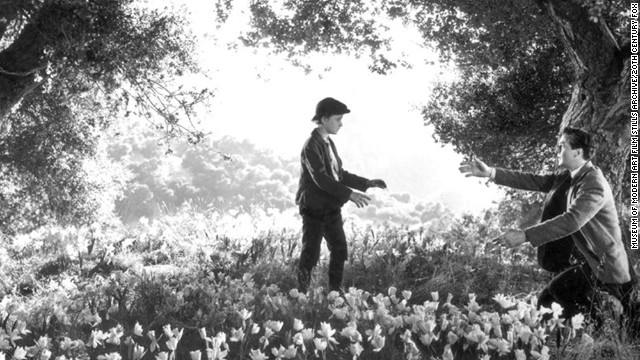 The movie many critics regard as the greatest American film didn't win the best picture Oscar for 1941. Orson Welles' "Citizen Kane" lost to a film directed by another classic director, John Ford, who helped re-create a Welsh mining village in California for "How Green Was My Valley." Roddy McDowall, left, and Walter Pidgeon starred.
The movie many critics regard as the greatest American film didn't win the best picture Oscar for 1941. Orson Welles' "Citizen Kane" lost to a film directed by another classic director, John Ford, who helped re-create a Welsh mining village in California for "How Green Was My Valley." Roddy McDowall, left, and Walter Pidgeon starred. 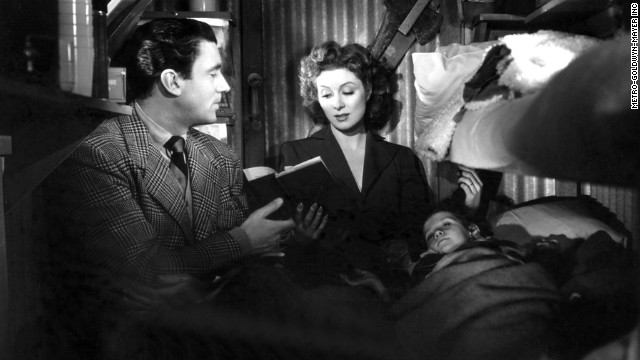 Hollywood's war effort went full throttle with William Wyler's "Mrs. Miniver" starring Walter Pidgeon and Greer Garson as a heroic couple whose family endures German air raids during the Battle of Britain. Garson also won the best actress award and received much flak for a lengthy acceptance speech that became the stuff of Hollywood legend.
Hollywood's war effort went full throttle with William Wyler's "Mrs. Miniver" starring Walter Pidgeon and Greer Garson as a heroic couple whose family endures German air raids during the Battle of Britain. Garson also won the best actress award and received much flak for a lengthy acceptance speech that became the stuff of Hollywood legend.  We'll always have Bogart and Bergman, aka Rick and Ilsa, in Michael Curtiz's "Casablanca." Nobody at Warner Bros. expected this movie, based on an unproduced play, "Everybody Comes to Rick's," to be a classic when it came out, but the American Film Institute ranked this best picture winner as the third-greatest U.S. film more than 60 years later.
We'll always have Bogart and Bergman, aka Rick and Ilsa, in Michael Curtiz's "Casablanca." Nobody at Warner Bros. expected this movie, based on an unproduced play, "Everybody Comes to Rick's," to be a classic when it came out, but the American Film Institute ranked this best picture winner as the third-greatest U.S. film more than 60 years later.  Hollywood's favorite crooner became its favorite priest. Bing Crosby, left, won the best actor award as Father Chuck O'Malley in "Going My Way." He encountered resistance from a crusty old priest (Barry Fitzgerald) when he tried to help an impoverished church parish.
Hollywood's favorite crooner became its favorite priest. Bing Crosby, left, won the best actor award as Father Chuck O'Malley in "Going My Way." He encountered resistance from a crusty old priest (Barry Fitzgerald) when he tried to help an impoverished church parish. 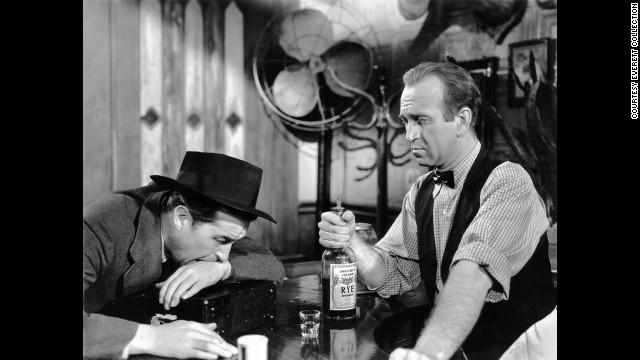 With World War II coming to an end, Hollywood turned to dark subject matter, such as alcoholism in Billy Wilder's "The Lost Weekend." Star Ray Milland, left, won the best actor award as a writer on a binge. Howard Da Silva was the bartender.
With World War II coming to an end, Hollywood turned to dark subject matter, such as alcoholism in Billy Wilder's "The Lost Weekend." Star Ray Milland, left, won the best actor award as a writer on a binge. Howard Da Silva was the bartender. 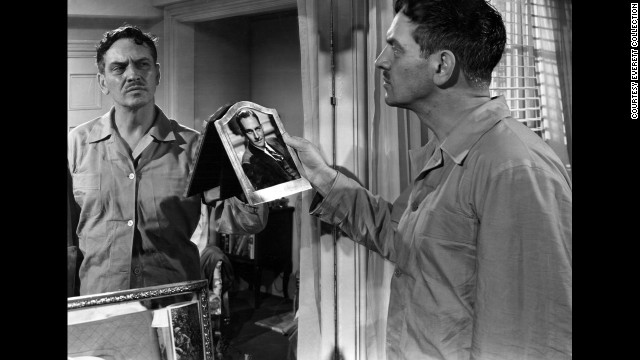 Veterans Fredric March, pictured, Dana Andrews and Harold Russell returned home to adjust to life in post-war America in this William Wyler classic. Myrna Loy, Teresa Wright and Cathy O'Donnell were the women in their lives who also found the world much more complicated with the war's end. Russell, a real vet, lost both hands in World War II.
Veterans Fredric March, pictured, Dana Andrews and Harold Russell returned home to adjust to life in post-war America in this William Wyler classic. Myrna Loy, Teresa Wright and Cathy O'Donnell were the women in their lives who also found the world much more complicated with the war's end. Russell, a real vet, lost both hands in World War II. 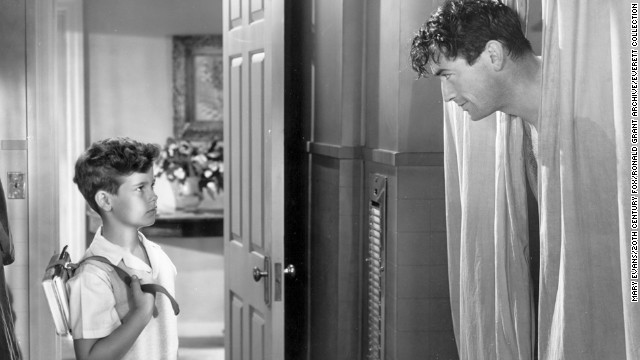 Elia Kazan's "Gentleman's Agreement" continued Hollywood's exploration of more serious subject matter, this time anti-Semitism. Gregory Peck, right, plays a reporter who goes undercover posing as a Jew, making his girlfriend (Dorothy McGuire) face uncomfortable truths about her upper class WASP life. A young Dean Stockwell played Peck's son.
Elia Kazan's "Gentleman's Agreement" continued Hollywood's exploration of more serious subject matter, this time anti-Semitism. Gregory Peck, right, plays a reporter who goes undercover posing as a Jew, making his girlfriend (Dorothy McGuire) face uncomfortable truths about her upper class WASP life. A young Dean Stockwell played Peck's son. 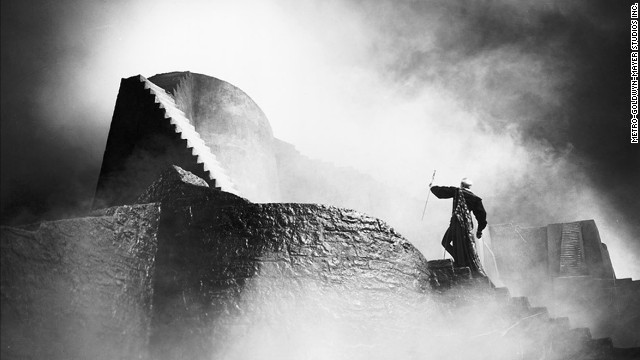 A British film took home the best picture Oscar when Laurence Olivier directed himself in an Oscar-winning role as Shakespeare's famous Danish prince who cannot make up his mind. Olivier trimmed the play's text and chose to do Hamlet's famous soliloquy ("To be, or not to be, that is the question") as a voice-over. Jean Simmons was Ophelia.
A British film took home the best picture Oscar when Laurence Olivier directed himself in an Oscar-winning role as Shakespeare's famous Danish prince who cannot make up his mind. Olivier trimmed the play's text and chose to do Hamlet's famous soliloquy ("To be, or not to be, that is the question") as a voice-over. Jean Simmons was Ophelia. 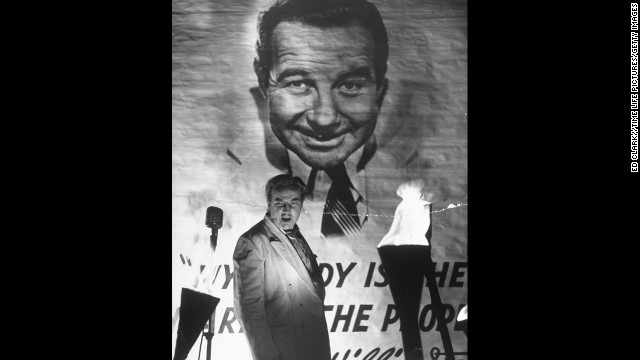 Unlike the 2006 remake with Sean Penn, this adaptation of Robert Penn Warren's Pulitzer Prize-winning novel was a critical and box-office success. Star Broderick Crawford also won the best actor award for his role as Willie Stark, a cynical politician who rises to become governor. Any resemblance to Louisiana's Huey Long was mere coincidence.
Unlike the 2006 remake with Sean Penn, this adaptation of Robert Penn Warren's Pulitzer Prize-winning novel was a critical and box-office success. Star Broderick Crawford also won the best actor award for his role as Willie Stark, a cynical politician who rises to become governor. Any resemblance to Louisiana's Huey Long was mere coincidence.  Director Joseph L. Mankiewicz's screenplay about an aging actress (Bette Davis, right) battling a scheming newcomer (Anne Baxter) remains one of the most quotable movies ever almost 65 years after its release. "All About Eve" held the record for a movie with the most Oscar nominations (14) until "Titanic" tied it in 1997. A young Marilyn Monroe, center, also attracted attention in an early role. As Margo Channing (Davis' character) would say, "Fasten your seat belts, it's going to be bumpy night!"
Director Joseph L. Mankiewicz's screenplay about an aging actress (Bette Davis, right) battling a scheming newcomer (Anne Baxter) remains one of the most quotable movies ever almost 65 years after its release. "All About Eve" held the record for a movie with the most Oscar nominations (14) until "Titanic" tied it in 1997. A young Marilyn Monroe, center, also attracted attention in an early role. As Margo Channing (Davis' character) would say, "Fasten your seat belts, it's going to be bumpy night!"  This MGM musical with Gene Kelly as an aspiring artist who falls for Leslie Caron in the City of Light faced stiff competition at the Oscars. But "An American in Paris" scored a major upset when it beat dramatic heavyweights "A Place in the Sun" and "A Streetcar Named Desire" for best picture.
This MGM musical with Gene Kelly as an aspiring artist who falls for Leslie Caron in the City of Light faced stiff competition at the Oscars. But "An American in Paris" scored a major upset when it beat dramatic heavyweights "A Place in the Sun" and "A Streetcar Named Desire" for best picture. 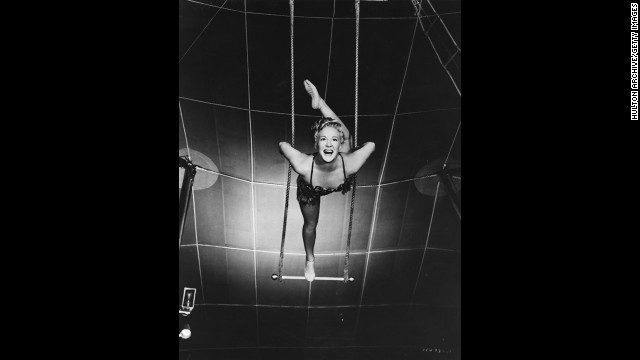 Producer-director Cecil B. DeMille had been making epics since the silents, but none had won best picture until "The Greatest Show on Earth," a 1952 circus spectacular with Betty Hutton, pictured, and Charlton Heston. Many critics and fans dismiss the movie as one of the worst best picture Oscar winners. "Singin' in the Rain," considered Hollywood's greatest movie musical, wasn't even nominated that year.
Producer-director Cecil B. DeMille had been making epics since the silents, but none had won best picture until "The Greatest Show on Earth," a 1952 circus spectacular with Betty Hutton, pictured, and Charlton Heston. Many critics and fans dismiss the movie as one of the worst best picture Oscar winners. "Singin' in the Rain," considered Hollywood's greatest movie musical, wasn't even nominated that year.  Facing the strict movie censorship of the 1950s, director Fred Zinnemann's version of "From Here to Eternity" considerably toned down James Jones' tough and profane novel about military life in Hawaii on the eve of the Pearl Harbor attack. But Burt Lancaster and Deborah Kerr's sexy tryst on the beach made waves among moviegoers.
Facing the strict movie censorship of the 1950s, director Fred Zinnemann's version of "From Here to Eternity" considerably toned down James Jones' tough and profane novel about military life in Hawaii on the eve of the Pearl Harbor attack. But Burt Lancaster and Deborah Kerr's sexy tryst on the beach made waves among moviegoers. 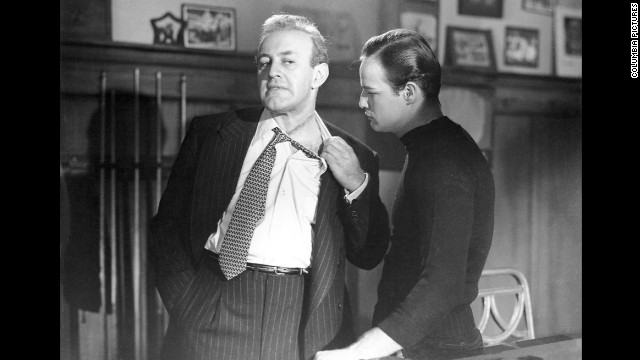 Marlon Brando, right, went up against corrupt union boss Lee J. Cobb in Elia Kazan's "On the Waterfront." In one of moviedom's most famous scenes that inspired countless future actors, Brando confronts his brother, a union lawyer played by Rod Steiger, in the back seat of a car: "I coulda been a contender. I coulda been somebody, instead of a bum, which is what I am."
Marlon Brando, right, went up against corrupt union boss Lee J. Cobb in Elia Kazan's "On the Waterfront." In one of moviedom's most famous scenes that inspired countless future actors, Brando confronts his brother, a union lawyer played by Rod Steiger, in the back seat of a car: "I coulda been a contender. I coulda been somebody, instead of a bum, which is what I am." 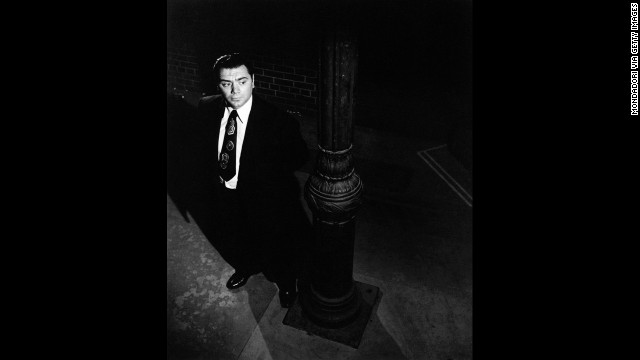 Hollywood studios saw television as the enemy in the 1950s as Americans stayed home in droves to watch series such as "I Love Lucy." But live TV plays soon were providing material for movies, including 1955's best picture winner, "Marty." Ernest Borgnine won stardom and the best actor award as a lonely butcher in the Paddy Chayefsky drama.
Hollywood studios saw television as the enemy in the 1950s as Americans stayed home in droves to watch series such as "I Love Lucy." But live TV plays soon were providing material for movies, including 1955's best picture winner, "Marty." Ernest Borgnine won stardom and the best actor award as a lonely butcher in the Paddy Chayefsky drama. 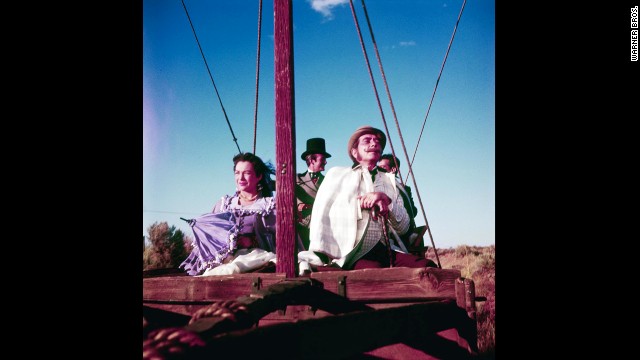 Responding to the competition from TV, the movies turned increasingly to epics in the 1950s such as producer Mike Todd's "Around the World in 80 Days." The picture was based on Jules Verne's novel and starred Shirley MacLaine, David Niven and Cantinflas as well as dozens of other celebrities in cameo roles, such as Noel Coward, Marlene Dietrich, Red Skelton and Frank Sinatra.
Responding to the competition from TV, the movies turned increasingly to epics in the 1950s such as producer Mike Todd's "Around the World in 80 Days." The picture was based on Jules Verne's novel and starred Shirley MacLaine, David Niven and Cantinflas as well as dozens of other celebrities in cameo roles, such as Noel Coward, Marlene Dietrich, Red Skelton and Frank Sinatra.  Director David Lean proved filmmakers could make intelligent epics such as "The Bridge on the River Kwai." Already a star in British films, Alec Guinness won international fame and a best actor Oscar as a British colonel held prisoner with his men in a Japanese camp during World War II.
Director David Lean proved filmmakers could make intelligent epics such as "The Bridge on the River Kwai." Already a star in British films, Alec Guinness won international fame and a best actor Oscar as a British colonel held prisoner with his men in a Japanese camp during World War II. 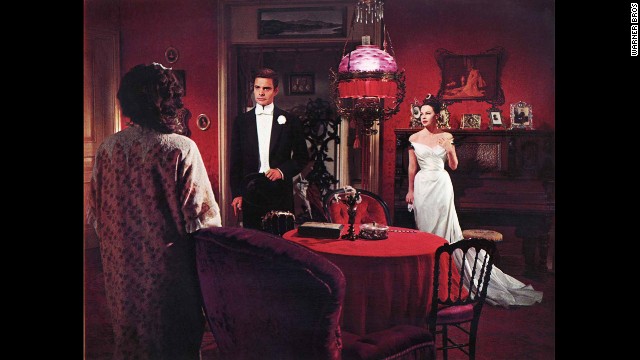 For one of its last great musicals, MGM turned to Alan Jay Lerner and Frederick Loewe after their success with "My Fair Lady" to create a musical based on Colette's "Gigi." The Vincente Minnelli film with Louis Jourdan, center, and Leslie Caron, right, won every Oscar it was nominated for (nine), including best picture and director. Legendary French star Maurice Chevalier had a memorable song with "Thank Heaven for Little Girls."
For one of its last great musicals, MGM turned to Alan Jay Lerner and Frederick Loewe after their success with "My Fair Lady" to create a musical based on Colette's "Gigi." The Vincente Minnelli film with Louis Jourdan, center, and Leslie Caron, right, won every Oscar it was nominated for (nine), including best picture and director. Legendary French star Maurice Chevalier had a memorable song with "Thank Heaven for Little Girls." 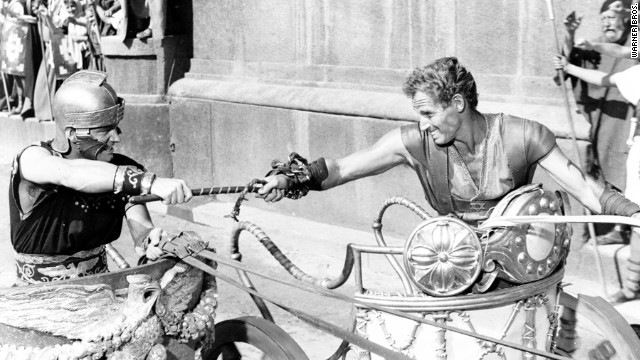 Biblical epics were all the rage in the 1950s, and none more so than William Wyler's "Ben-Hur." The movie won a then-record 11 Academy Awards, including best picture, director (Wyler) and actor (Charlton Heston, right). The chariot scene undoubtedly helped ensure "Ben-Hur's" No. 2 ranking on the American Film Institute's list of greatest epics.
Biblical epics were all the rage in the 1950s, and none more so than William Wyler's "Ben-Hur." The movie won a then-record 11 Academy Awards, including best picture, director (Wyler) and actor (Charlton Heston, right). The chariot scene undoubtedly helped ensure "Ben-Hur's" No. 2 ranking on the American Film Institute's list of greatest epics. 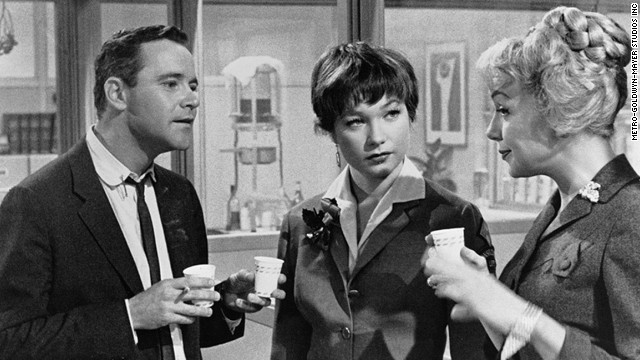 Long before "Mad Men," Billy Wilder's "The Apartment" skewered corporate life of the early 1960s. Up-and-comer Jack Lemmon stays busy loaning his apartment key to company men who need a place to cheat on their wives. He falls for Shirley MacLaine, center, who is having an affair with one of the bosses ("My Three Sons' " Fred MacMurray in an unsympathetic role).
Long before "Mad Men," Billy Wilder's "The Apartment" skewered corporate life of the early 1960s. Up-and-comer Jack Lemmon stays busy loaning his apartment key to company men who need a place to cheat on their wives. He falls for Shirley MacLaine, center, who is having an affair with one of the bosses ("My Three Sons' " Fred MacMurray in an unsympathetic role). 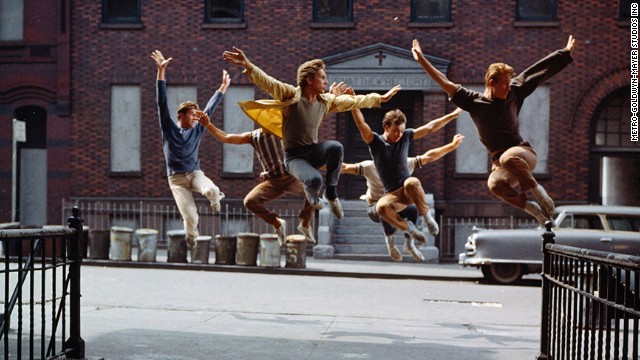 "West Side Story" used the streets of New York as backdrops for this musical version of "Romeo and Juliet." The Jets and Sharks replaced the Montagues and Capulets as rival gangs ready to rumble, leading to tragedy for young lovers Tony (Richard Beymer) and Maria (Natalie Wood). The film took home 10 Oscars, including best supporting actor (George Chakiris), supporting actress (Rita Moreno) and direction (Robert Wise and Jerome Robbins, the first time the award was shared).
"West Side Story" used the streets of New York as backdrops for this musical version of "Romeo and Juliet." The Jets and Sharks replaced the Montagues and Capulets as rival gangs ready to rumble, leading to tragedy for young lovers Tony (Richard Beymer) and Maria (Natalie Wood). The film took home 10 Oscars, including best supporting actor (George Chakiris), supporting actress (Rita Moreno) and direction (Robert Wise and Jerome Robbins, the first time the award was shared).  David Lean created the epic of all epics with "Lawrence of Arabia." Peter O'Toole, left, with Omar Sharif, became a superstar with his portrayal of T.E. Lawrence, the legendary British officer who helped lead the Arab revolt against the Ottoman Empire in World War I. The movie won seven Oscars, including for Lean's direction.
David Lean created the epic of all epics with "Lawrence of Arabia." Peter O'Toole, left, with Omar Sharif, became a superstar with his portrayal of T.E. Lawrence, the legendary British officer who helped lead the Arab revolt against the Ottoman Empire in World War I. The movie won seven Oscars, including for Lean's direction.  Albert Finney tackled the amorous title role in "Tom Jones," a British comedy based on Henry Fielding's novel about a foundling raised by a wealthy landowner. Diane Cilento, right, was one of his conquests. Tony Richardson also won the Oscar for his direction of the film.
Albert Finney tackled the amorous title role in "Tom Jones," a British comedy based on Henry Fielding's novel about a foundling raised by a wealthy landowner. Diane Cilento, right, was one of his conquests. Tony Richardson also won the Oscar for his direction of the film. 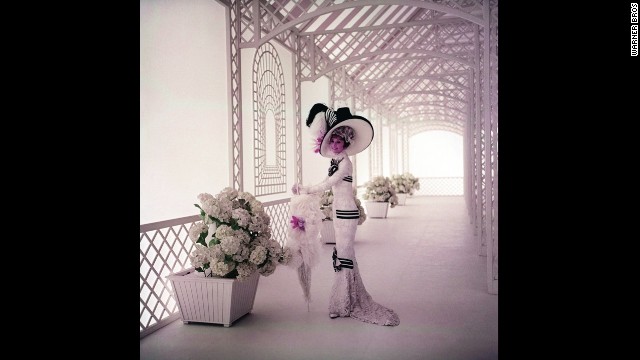 Julie Andrews' fans were upset when the original Broadway star of "My Fair Lady" wasn't chosen for the film of the Lerner-Loewe musical. Audrey Hepburn may not have been convincing as a guttersnipe in the opening scenes of George Cukor's best picture winner, but no one could deny she was ravishing in Cecil Beaton's costumes once Eliza Doolittle had been transformed into a swan.
Julie Andrews' fans were upset when the original Broadway star of "My Fair Lady" wasn't chosen for the film of the Lerner-Loewe musical. Audrey Hepburn may not have been convincing as a guttersnipe in the opening scenes of George Cukor's best picture winner, but no one could deny she was ravishing in Cecil Beaton's costumes once Eliza Doolittle had been transformed into a swan.  Forget the recent live broadcast of the Richard Rodgers and Oscar Hammerstein musical on NBC with Carrie Underwood. For many movie fans, Julie Andrews remains the one and only Maria, governess to the von Trapp children in Austria on the eve of World War II. Marni Nixon, who dubbed the singing voices of Natalie Wood in "West Side Story," Deborah Kerr in "The King and I" and Audrey Hepburn in "My Fair Lady," had her first on-screen role as a nun. Not only did "The Sound of Music" win best picture, it was also for a time the biggest moneymaker ever.
Forget the recent live broadcast of the Richard Rodgers and Oscar Hammerstein musical on NBC with Carrie Underwood. For many movie fans, Julie Andrews remains the one and only Maria, governess to the von Trapp children in Austria on the eve of World War II. Marni Nixon, who dubbed the singing voices of Natalie Wood in "West Side Story," Deborah Kerr in "The King and I" and Audrey Hepburn in "My Fair Lady," had her first on-screen role as a nun. Not only did "The Sound of Music" win best picture, it was also for a time the biggest moneymaker ever. 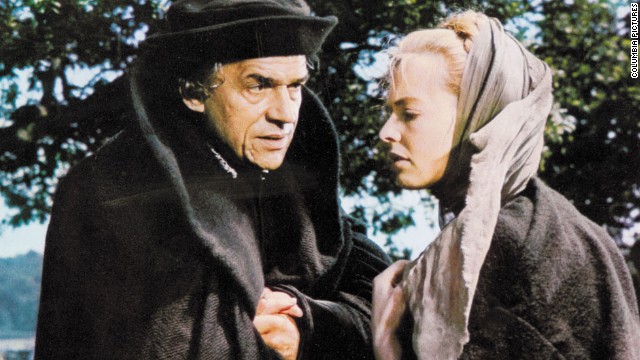 Paul Scofield re-created his stage role as Sir Thomas More in Fred Zinnemann's film version of the Robert Bolt drama "A Man for All Seasons." The film portrayed More as a man of conscience who refused to recognize King Henry VIII as head of the Church of England because of his denial of the Pope's authority. Scofield and director Zinnemann both won Oscars for their work. Susannah York, right, co-starred.
Paul Scofield re-created his stage role as Sir Thomas More in Fred Zinnemann's film version of the Robert Bolt drama "A Man for All Seasons." The film portrayed More as a man of conscience who refused to recognize King Henry VIII as head of the Church of England because of his denial of the Pope's authority. Scofield and director Zinnemann both won Oscars for their work. Susannah York, right, co-starred. 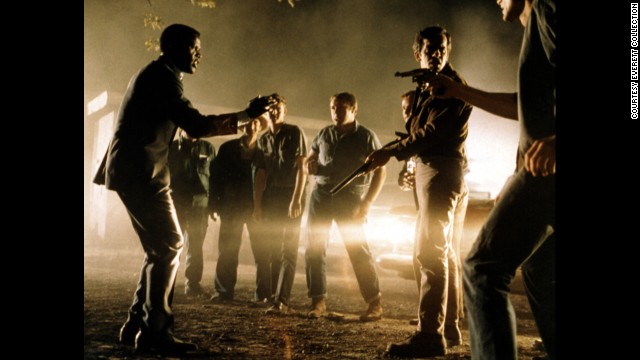 Youth-oriented movies began taking over Hollywood by 1967, the year of "Bonnie and Clyde" and "The Graduate." But the best picture winner went to Norman Jewison's "In the Heat of the Night," an old-fashioned crime drama in which an African-American detective (Sidney Poitier, left) goes South to solve a murder, working with a reluctant redneck sheriff (Rod Steiger). Poitier played the role of Virgil Tibbs in two sequels, and the movie later spawned a hit TV series with Carroll O'Connor.
Youth-oriented movies began taking over Hollywood by 1967, the year of "Bonnie and Clyde" and "The Graduate." But the best picture winner went to Norman Jewison's "In the Heat of the Night," an old-fashioned crime drama in which an African-American detective (Sidney Poitier, left) goes South to solve a murder, working with a reluctant redneck sheriff (Rod Steiger). Poitier played the role of Virgil Tibbs in two sequels, and the movie later spawned a hit TV series with Carroll O'Connor. 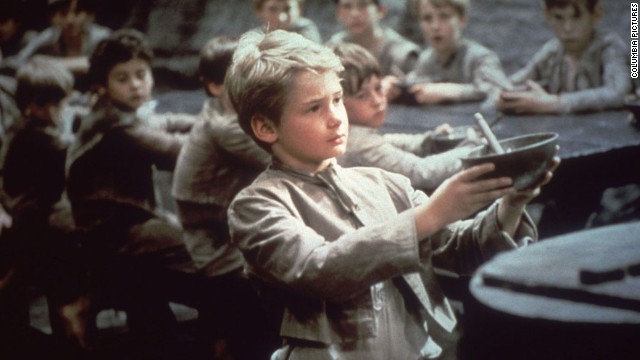 This best picture winner was a musical adaptation of Charles Dickens' "Oliver Twist" with Mark Lester as an orphan who teams up with other young pickpockets led by an old criminal. Carol Reed also took home the Oscar for best director. Two of 1968's best-remembered movies, Stanley Kubrick's "2001: A Space Odyssey" and Roman Polanski's "Rosemary's Baby," weren't even nominated for best picture.
This best picture winner was a musical adaptation of Charles Dickens' "Oliver Twist" with Mark Lester as an orphan who teams up with other young pickpockets led by an old criminal. Carol Reed also took home the Oscar for best director. Two of 1968's best-remembered movies, Stanley Kubrick's "2001: A Space Odyssey" and Roman Polanski's "Rosemary's Baby," weren't even nominated for best picture.  John Schlesinger's "Midnight Cowboy" was the first best picture Oscar winner to be rated X, reflecting the easing of censorship in the late '60s. The movie established Jon Voight, right, as a star for his portrayal of a dumb, naive Texan who fancies himself a gigolo to rich women in New York but ends up a hustler. Fresh from "The Graduate," co-star Dustin Hoffman as con man Ratso Rizzo proved he was one of the top actors of his generation.
John Schlesinger's "Midnight Cowboy" was the first best picture Oscar winner to be rated X, reflecting the easing of censorship in the late '60s. The movie established Jon Voight, right, as a star for his portrayal of a dumb, naive Texan who fancies himself a gigolo to rich women in New York but ends up a hustler. Fresh from "The Graduate," co-star Dustin Hoffman as con man Ratso Rizzo proved he was one of the top actors of his generation.  George C. Scott made Oscar history when he became the first actor to refuse the award. Scott played the title role in this biography of volatile World War II Gen. George S. Patton Jr. The film, directed by Franklin J. Schaffner, reportedly was one of President Richard Nixon's favorite films.
George C. Scott made Oscar history when he became the first actor to refuse the award. Scott played the title role in this biography of volatile World War II Gen. George S. Patton Jr. The film, directed by Franklin J. Schaffner, reportedly was one of President Richard Nixon's favorite films.  Gene Hackman as Detective "Popeye" Doyle goes after hit man Marcel Bozzuffi in William Friedkin's "The French Connection." This best picture winner about New York cops trying to stop a huge heroin shipment from France features one of the movies' most memorable chase scenes.
Gene Hackman as Detective "Popeye" Doyle goes after hit man Marcel Bozzuffi in William Friedkin's "The French Connection." This best picture winner about New York cops trying to stop a huge heroin shipment from France features one of the movies' most memorable chase scenes. 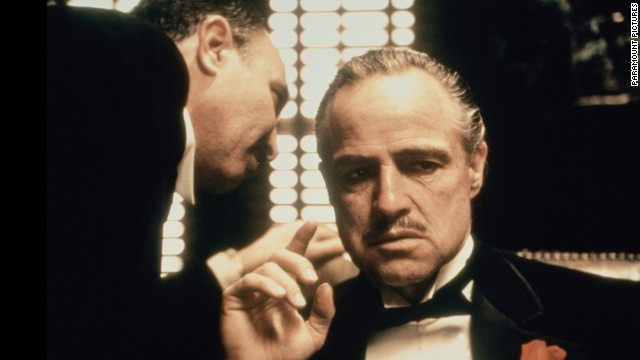 With his career in decline for nearly a decade, Marlon Brando scored a comeback as Don Vito Corleone, the aging patriarch of a crime family, in Francis Ford Coppola's "The Godfather." Brando won his second Oscar for best actor (which he refused), and the movie made a superstar of Al Pacino as the son who takes over the "family business." The movie ranked No. 2 on the American Film Institute's list of the top 100 U.S. films.
With his career in decline for nearly a decade, Marlon Brando scored a comeback as Don Vito Corleone, the aging patriarch of a crime family, in Francis Ford Coppola's "The Godfather." Brando won his second Oscar for best actor (which he refused), and the movie made a superstar of Al Pacino as the son who takes over the "family business." The movie ranked No. 2 on the American Film Institute's list of the top 100 U.S. films.  Teaming up again after "Butch Cassidy and the Sundance Kid" (1969), Paul Newman and Robert Redford in best picture winner "The Sting" helped make the buddy film one of the key movie genres of the '70s. The two played con men in 1930s Chicago in the George Roy Hill movie, which featured the music of ragtime composer Scott Joplin.
Teaming up again after "Butch Cassidy and the Sundance Kid" (1969), Paul Newman and Robert Redford in best picture winner "The Sting" helped make the buddy film one of the key movie genres of the '70s. The two played con men in 1930s Chicago in the George Roy Hill movie, which featured the music of ragtime composer Scott Joplin. 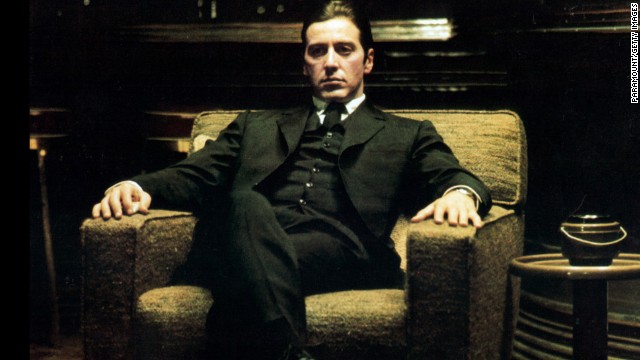 Al Pacino returned as Michael Corleone in "The Godfather: Part II," which became the first sequel to win the best picture Oscar. Francis Ford Coppola received the best director award this time, and newcomer Robert De Niro won the best supporting actor Oscar playing Vito Corleone as a young man. Coppola's "The Godfather: Part III," released in 1990, did not repeat the success of the first two films.
Al Pacino returned as Michael Corleone in "The Godfather: Part II," which became the first sequel to win the best picture Oscar. Francis Ford Coppola received the best director award this time, and newcomer Robert De Niro won the best supporting actor Oscar playing Vito Corleone as a young man. Coppola's "The Godfather: Part III," released in 1990, did not repeat the success of the first two films.  "One Flew Over the Cuckoo's Nest" captured all four top Academy Awards, a feat that had not been accomplished in more than 40 years (not since "It Happened One Night.") Besides best picture, the movie took home Oscars for best director (Milos Forman), actor (Jack Nicholson) and actress (Louise Fletcher). It won a fifth for best adapted screenplay. In this film of Ken Kesey's novel, Nicholson, second from left, struck a chord with audiences as McMurphy, a rebellious inmate in a mental institution who faces off against the ultimate authority figure, Nurse Ratched (Fletcher).
"One Flew Over the Cuckoo's Nest" captured all four top Academy Awards, a feat that had not been accomplished in more than 40 years (not since "It Happened One Night.") Besides best picture, the movie took home Oscars for best director (Milos Forman), actor (Jack Nicholson) and actress (Louise Fletcher). It won a fifth for best adapted screenplay. In this film of Ken Kesey's novel, Nicholson, second from left, struck a chord with audiences as McMurphy, a rebellious inmate in a mental institution who faces off against the ultimate authority figure, Nurse Ratched (Fletcher). 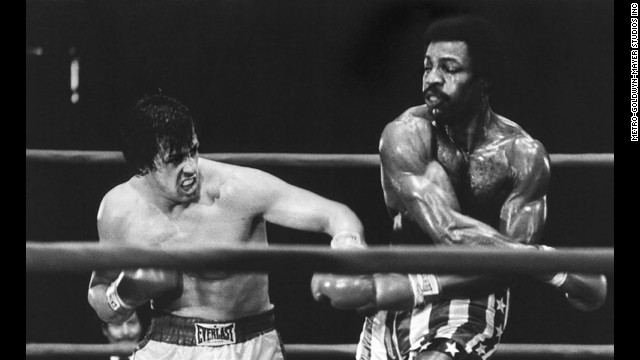 Sylvester Stallone, left, as struggling boxer Rocky Balboa, gets his shot at the championship against Carl Weathers as Apollo Creed in this best picture winner. Like its hero, "Rocky" was an underdog, a low-budget film written by Stallone, then an unknown actor, that became one of the decade's biggest sleeper hits. Stallone would go on to make five sequels.
Sylvester Stallone, left, as struggling boxer Rocky Balboa, gets his shot at the championship against Carl Weathers as Apollo Creed in this best picture winner. Like its hero, "Rocky" was an underdog, a low-budget film written by Stallone, then an unknown actor, that became one of the decade's biggest sleeper hits. Stallone would go on to make five sequels.  Moviegoers fell in love with Diane Keaton in her Oscar-winning role as the ditsy, insecure heroine of Woody Allen's autobiographical "Annie Hall." Her thrift-store fashions and offbeat sayings ("La-di-da, la-di-da") became hallmarks of the late '70s. Allen won Oscars for best director and original screenplay (with Marshall Brickman) for the film.
Moviegoers fell in love with Diane Keaton in her Oscar-winning role as the ditsy, insecure heroine of Woody Allen's autobiographical "Annie Hall." Her thrift-store fashions and offbeat sayings ("La-di-da, la-di-da") became hallmarks of the late '70s. Allen won Oscars for best director and original screenplay (with Marshall Brickman) for the film.  Hollywood began to explore the Vietnam War in the late '70s. Michael Cimino's "The Deer Hunter" examined the effects on steelworkers, from left, John Cazale, Chuck Aspegren, Robert De Niro, John Savage and Christopher Walken. Cimino and Walken also won Oscars for best director and best supporting actor, respectively.
Hollywood began to explore the Vietnam War in the late '70s. Michael Cimino's "The Deer Hunter" examined the effects on steelworkers, from left, John Cazale, Chuck Aspegren, Robert De Niro, John Savage and Christopher Walken. Cimino and Walken also won Oscars for best director and best supporting actor, respectively.  Dustin Hoffman played a bewildered dad who had paid little attention to family life until his wife leaves him and he has to raise their son (Justin Henry, right) alone in "Kramer vs. Kramer." A bitter custody battle ensues once the wife (played by Meryl Streep) decides she wants her son back. Both Hoffman (best actor) and Streep (best supporting actress) won Oscars for their roles, and Robert Benton took home direction and writing honors for the film.
Dustin Hoffman played a bewildered dad who had paid little attention to family life until his wife leaves him and he has to raise their son (Justin Henry, right) alone in "Kramer vs. Kramer." A bitter custody battle ensues once the wife (played by Meryl Streep) decides she wants her son back. Both Hoffman (best actor) and Streep (best supporting actress) won Oscars for their roles, and Robert Benton took home direction and writing honors for the film. 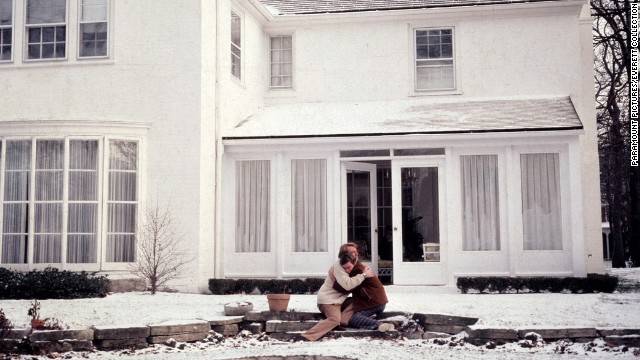 Timothy Hutton, right, played a suicidal young man struggling to cope with the death of his brother in "Ordinary People," the first film directed by actor Robert Redford. Donald Sutherland, left, was his helpless father, and Mary Tyler Moore surprised audiences with her portrayal as Hutton's icy, controlling mother.
Timothy Hutton, right, played a suicidal young man struggling to cope with the death of his brother in "Ordinary People," the first film directed by actor Robert Redford. Donald Sutherland, left, was his helpless father, and Mary Tyler Moore surprised audiences with her portrayal as Hutton's icy, controlling mother. 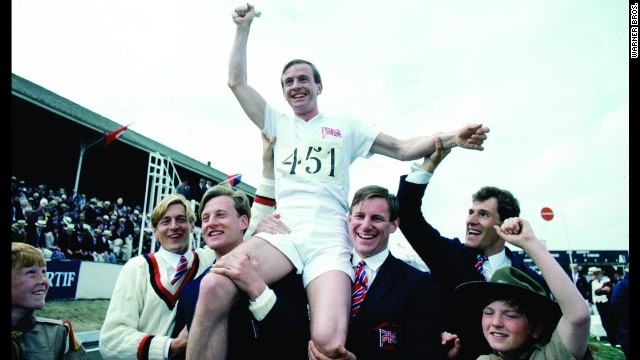 In another Oscar sleeper, "Chariots of Fire," a small British film about two English runners competing in the 1924 Olympics, beat Warren Beatty's epic film "Reds" for best picture. "Chariots" won four Oscars, including one for its stirring score by Vangelis. The theme music also hit No. 1 on the pop charts. Beatty wasn't entirely shut out: He picked up the Oscar for best director.
In another Oscar sleeper, "Chariots of Fire," a small British film about two English runners competing in the 1924 Olympics, beat Warren Beatty's epic film "Reds" for best picture. "Chariots" won four Oscars, including one for its stirring score by Vangelis. The theme music also hit No. 1 on the pop charts. Beatty wasn't entirely shut out: He picked up the Oscar for best director.  Director Richard Attenborough's epic, three-hour film about the life of Mohandas K. "Mahatma" Gandhi won eight Oscars. Ben Kingsley, here with Candice Bergen, played the inspiring leader who used nonviolent tactics to help establish the modern country of India. Among the films it beat for best picture: "E.T. The Extra-Terrestrial" and "Tootsie."
Director Richard Attenborough's epic, three-hour film about the life of Mohandas K. "Mahatma" Gandhi won eight Oscars. Ben Kingsley, here with Candice Bergen, played the inspiring leader who used nonviolent tactics to help establish the modern country of India. Among the films it beat for best picture: "E.T. The Extra-Terrestrial" and "Tootsie."  Debra Winger, Shirley MacLaine and Jack Nicholson starred in James L. Brooks' adaptation of Larry McMurtry's novel about an up-and-down mother-daughter relationship. Brooks produced, directed and wrote the film and won Oscars for all three (best picture goes to the producer); to this day, he's the only person to pull off the trick solo.
Debra Winger, Shirley MacLaine and Jack Nicholson starred in James L. Brooks' adaptation of Larry McMurtry's novel about an up-and-down mother-daughter relationship. Brooks produced, directed and wrote the film and won Oscars for all three (best picture goes to the producer); to this day, he's the only person to pull off the trick solo.  Another epic, "Amadeus" was based on Peter Shaffer's award-winning play about composer Wolfgang Amadeus Mozart (Tom Hulce) and his rival, Antonio Salieri. The film won eight Oscars, including awards for director Milos Forman -- his second, after "One Flew Over the Cuckoo's Nest" -- and star F. Murray Abraham, who played Salieri.
Another epic, "Amadeus" was based on Peter Shaffer's award-winning play about composer Wolfgang Amadeus Mozart (Tom Hulce) and his rival, Antonio Salieri. The film won eight Oscars, including awards for director Milos Forman -- his second, after "One Flew Over the Cuckoo's Nest" -- and star F. Murray Abraham, who played Salieri. 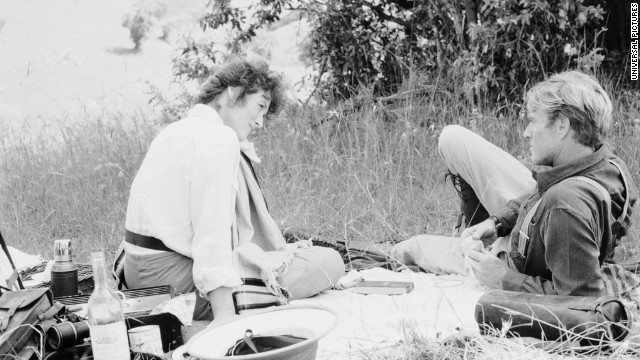 Isak Dinesen's autobiographical book was turned into a movie that won seven Oscars. Meryl Streep stars as the independent-minded Danish author who spent part of her married life in British East Africa, later Kenya. She falls for a big-game hunter, played by Robert Redford, while her fragile marriage falls apart.
Isak Dinesen's autobiographical book was turned into a movie that won seven Oscars. Meryl Streep stars as the independent-minded Danish author who spent part of her married life in British East Africa, later Kenya. She falls for a big-game hunter, played by Robert Redford, while her fragile marriage falls apart. 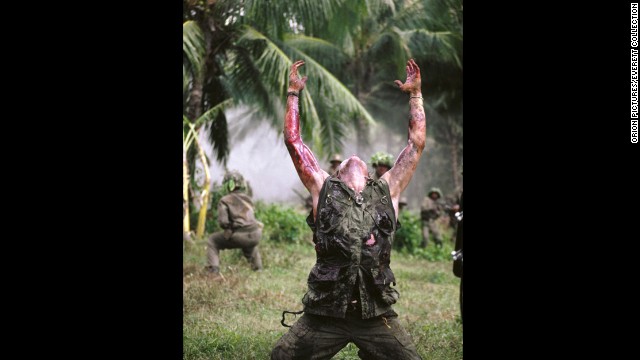 "Platoon" made headlines in 1986 for its blunt and unsparing look at the U.S. experience in Vietnam. It follows a small group of men, including leaders Willem Dafoe, pictured, and Tom Berenger, who play on the loyalties of raw recruit Charlie Sheen. The film made director and writer Oliver Stone, himself a Vietnam veteran, a household name. "Platoon" won four Oscars, including best picture and best director.
"Platoon" made headlines in 1986 for its blunt and unsparing look at the U.S. experience in Vietnam. It follows a small group of men, including leaders Willem Dafoe, pictured, and Tom Berenger, who play on the loyalties of raw recruit Charlie Sheen. The film made director and writer Oliver Stone, himself a Vietnam veteran, a household name. "Platoon" won four Oscars, including best picture and best director. 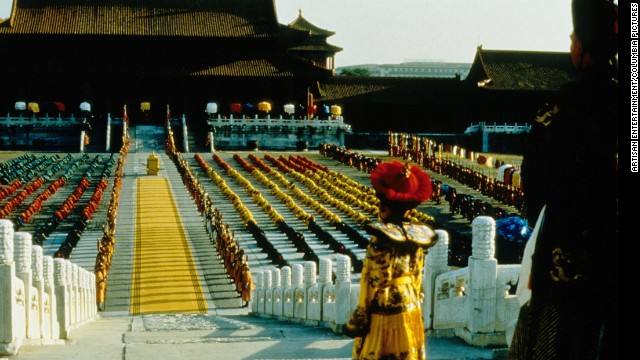 Director Bernardo Bertolucci's film about the life of Chinese emperor Puyi won nine Oscars -- quite an achievement, considering it was nominated for zero awards in the acting categories. Besides best picture, it also won best director, best adapted screenplay and best cinematography, among others.
Director Bernardo Bertolucci's film about the life of Chinese emperor Puyi won nine Oscars -- quite an achievement, considering it was nominated for zero awards in the acting categories. Besides best picture, it also won best director, best adapted screenplay and best cinematography, among others.  Though "Rain Man" is ostensibly about the relationship between Dustin Hoffman's autistic Raymond Babbitt and his brother, Charlie (Tom Cruise), it's probably best remembered for Hoffman's performance as a savant who can do complicated calculations in his head, count cards in Las Vegas and never miss an episode of Judge Joseph Wapner's "People's Court." The film won four Oscars, including a best actor award for Hoffman and a best director trophy for Barry Levinson.
Though "Rain Man" is ostensibly about the relationship between Dustin Hoffman's autistic Raymond Babbitt and his brother, Charlie (Tom Cruise), it's probably best remembered for Hoffman's performance as a savant who can do complicated calculations in his head, count cards in Las Vegas and never miss an episode of Judge Joseph Wapner's "People's Court." The film won four Oscars, including a best actor award for Hoffman and a best director trophy for Barry Levinson.  Stage actress Jessica Tandy finally became a movie star at age 80 as an Atlanta Jewish matriarch who develops a close relationship with her driver, Hoke, played by Morgan Freeman, in Bruce Beresford's film of Alfred Uhry's Pulitzer Prize-winning play. "Driving Miss Daisy" didn't compete for best picture against some of the year's most acclaimed movies -- "Sex, Lies, and Videotape," "Do the Right Thing" and "Drugstore Cowboy" weren't nominated for the top award.
Stage actress Jessica Tandy finally became a movie star at age 80 as an Atlanta Jewish matriarch who develops a close relationship with her driver, Hoke, played by Morgan Freeman, in Bruce Beresford's film of Alfred Uhry's Pulitzer Prize-winning play. "Driving Miss Daisy" didn't compete for best picture against some of the year's most acclaimed movies -- "Sex, Lies, and Videotape," "Do the Right Thing" and "Drugstore Cowboy" weren't nominated for the top award.  In what was essentially a two-horse race, Kevin Costner's three-hour "Dances With Wolves" faced off against one of Martin Scorsese's best, "Goodfellas." "Dances With Wolves," about a Civil War soldier who falls in with a Lakota tribe in the American West, was the decisive winner, earning best picture, best director for Costner and best adapted screenplay for Michael Blake, three of its seven Oscars. "Goodfellas" won just one: Joe Pesci's best supporting actor trophy.
In what was essentially a two-horse race, Kevin Costner's three-hour "Dances With Wolves" faced off against one of Martin Scorsese's best, "Goodfellas." "Dances With Wolves," about a Civil War soldier who falls in with a Lakota tribe in the American West, was the decisive winner, earning best picture, best director for Costner and best adapted screenplay for Michael Blake, three of its seven Oscars. "Goodfellas" won just one: Joe Pesci's best supporting actor trophy. 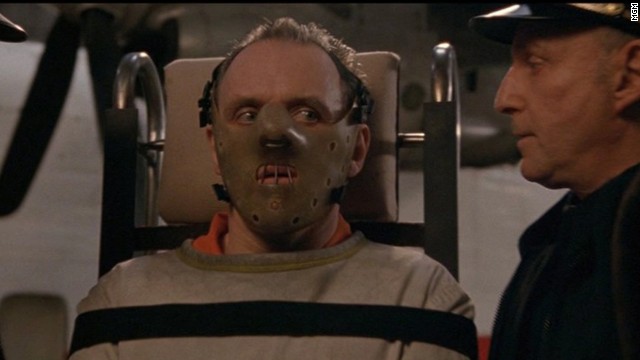 It's rare that a film released early in the year manages to even get nominated for best picture, not to mention winning the award, but "Lambs" -- based on the Thomas Harris novel about a serial killer helping an FBI agent to catch another killer -- took home best picture, best actor (Anthony Hopkins, who plays Hannibal Lecter), best actress (Jodie Foster), best director (Jonathan Demme) and best adapted screenplay. Hopkins' performance had relatively little screen time -- less than 20 minutes -- but was so commanding he can be credited for the continuing fascination with Lecter, who now headlines an NBC series.
It's rare that a film released early in the year manages to even get nominated for best picture, not to mention winning the award, but "Lambs" -- based on the Thomas Harris novel about a serial killer helping an FBI agent to catch another killer -- took home best picture, best actor (Anthony Hopkins, who plays Hannibal Lecter), best actress (Jodie Foster), best director (Jonathan Demme) and best adapted screenplay. Hopkins' performance had relatively little screen time -- less than 20 minutes -- but was so commanding he can be credited for the continuing fascination with Lecter, who now headlines an NBC series.  "It's a hell of a thing, killing a man," says Clint Eastwood's gunfighter, William Munny, in "Unforgiven" -- and, indeed, the Western can be seen as one of Eastwood's many meditations on the impact of violence in society. The actor and director plays Munny, a retired outlaw who is drawn back into his old role to avenge himself on a brutal sheriff (Gene Hackman). "Unforgiven" was just the third Western to win best picture, after "Cimarron" (1931) and "Dances With Wolves" (1990).
"It's a hell of a thing, killing a man," says Clint Eastwood's gunfighter, William Munny, in "Unforgiven" -- and, indeed, the Western can be seen as one of Eastwood's many meditations on the impact of violence in society. The actor and director plays Munny, a retired outlaw who is drawn back into his old role to avenge himself on a brutal sheriff (Gene Hackman). "Unforgiven" was just the third Western to win best picture, after "Cimarron" (1931) and "Dances With Wolves" (1990). 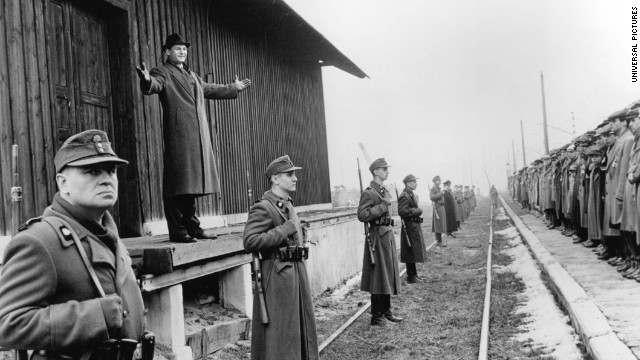 By 1993, Steven Spielberg was already known as one of the great directors in Hollywood history, but an Oscar had eluded him. That changed with "Schindler's List," a gripping story about a German industrialist who saved more than 1,000 Jews during the Holocaust. The film earned honors for picture, director, adapted screenplay and cinematography.
By 1993, Steven Spielberg was already known as one of the great directors in Hollywood history, but an Oscar had eluded him. That changed with "Schindler's List," a gripping story about a German industrialist who saved more than 1,000 Jews during the Holocaust. The film earned honors for picture, director, adapted screenplay and cinematography. 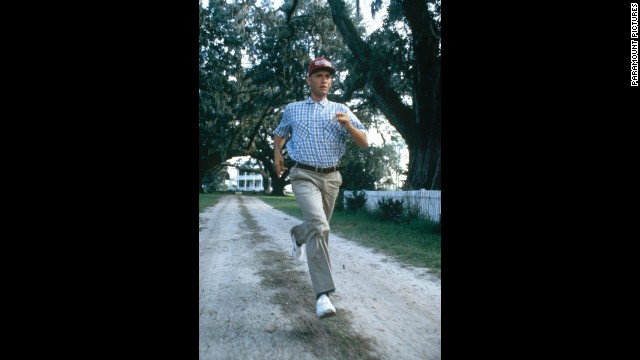 Tom Hanks plays a Southern bumpkin who always seems to be in proximity to great events, whether they be the Vietnam War, U.S.-Chinese ping-pong diplomacy or the writing of "Imagine." Though some critics hooted, the film was a popular success and also won Oscars for Hanks, director Robert Zemeckis and adapted screenplay -- six in all.
Tom Hanks plays a Southern bumpkin who always seems to be in proximity to great events, whether they be the Vietnam War, U.S.-Chinese ping-pong diplomacy or the writing of "Imagine." Though some critics hooted, the film was a popular success and also won Oscars for Hanks, director Robert Zemeckis and adapted screenplay -- six in all. 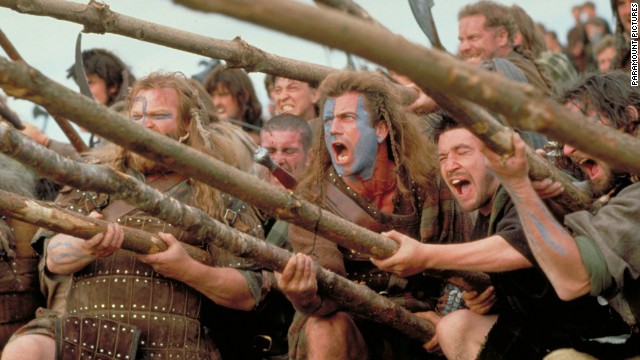 Mel Gibson directed and starred in the story of Scottish warrior William Wallace, who led the Scottish army against English invaders led by King Edward I. The film won five Oscars, including best picture and best director, and has led to countless sports teams yelling "Freedom!" as they go up against opponents.
Mel Gibson directed and starred in the story of Scottish warrior William Wallace, who led the Scottish army against English invaders led by King Edward I. The film won five Oscars, including best picture and best director, and has led to countless sports teams yelling "Freedom!" as they go up against opponents. 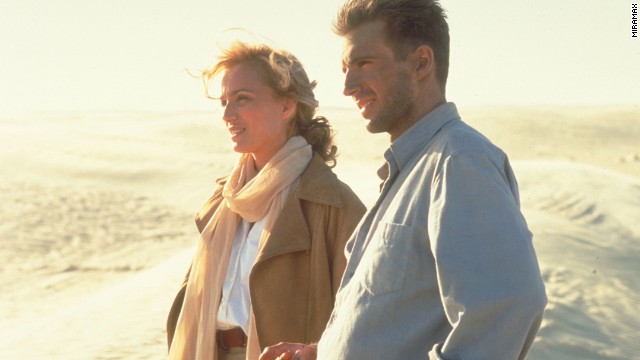 Some found it lyrical. Others, such as an episode of "Seinfeld," mocked it as boring. Either way, "The English Patient," with Ralph Fiennes and Kristin Scott Thomas, was a huge hit with audiences and critics -- and with the academy, which bestowed nine Oscars on the film about a burned British soldier and a loving nurse. Among the winners: director Anthony Minghella and supporting actress Juliette Binoche.
Some found it lyrical. Others, such as an episode of "Seinfeld," mocked it as boring. Either way, "The English Patient," with Ralph Fiennes and Kristin Scott Thomas, was a huge hit with audiences and critics -- and with the academy, which bestowed nine Oscars on the film about a burned British soldier and a loving nurse. Among the winners: director Anthony Minghella and supporting actress Juliette Binoche. 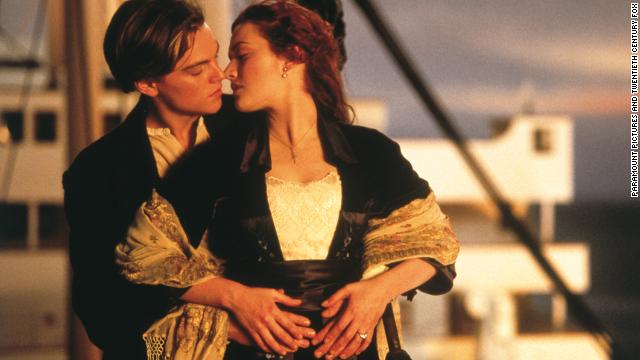 In the months leading up to its release, "Titanic" was rumored to be as big a disaster as the ship on which its story was based. But director James Cameron had the last laugh: When the final results were tallied, "Titanic," with Leonardo DiCaprio and Kate Winslet, had become the biggest box-office hit of all time (since surpassed by another Cameron film, "Avatar") and winner of 11 Oscars -- the most of any film since 1959's "Ben-Hur." Cameron took home a trophy for best director, too.
In the months leading up to its release, "Titanic" was rumored to be as big a disaster as the ship on which its story was based. But director James Cameron had the last laugh: When the final results were tallied, "Titanic," with Leonardo DiCaprio and Kate Winslet, had become the biggest box-office hit of all time (since surpassed by another Cameron film, "Avatar") and winner of 11 Oscars -- the most of any film since 1959's "Ben-Hur." Cameron took home a trophy for best director, too.  Was the film really that good or had Harvey Weinstein, its co-producer and head of studio Miramax, done an exceptionally good job at lobbying? Either way, there were gasps when best picture went to "Shakespeare" and not to favorite "Saving Private Ryan." Still, "Shakespeare" had plenty going for it, including an Oscar-winning best actress performance by Gwyneth Paltrow (here with Joseph Fiennes) and a clever script by Marc Norman and Tom Stoppard. It won seven Oscars total.
Was the film really that good or had Harvey Weinstein, its co-producer and head of studio Miramax, done an exceptionally good job at lobbying? Either way, there were gasps when best picture went to "Shakespeare" and not to favorite "Saving Private Ryan." Still, "Shakespeare" had plenty going for it, including an Oscar-winning best actress performance by Gwyneth Paltrow (here with Joseph Fiennes) and a clever script by Marc Norman and Tom Stoppard. It won seven Oscars total. 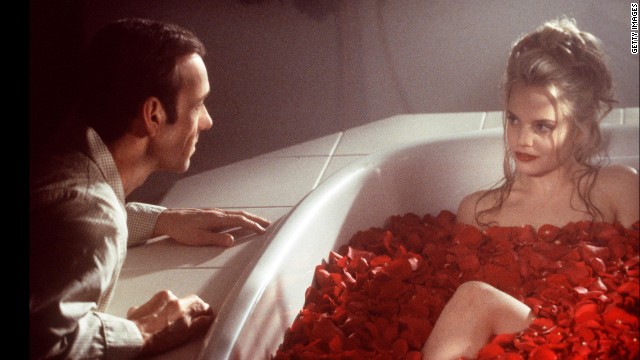 Kevin Spacey stars as a frustrated middle manager who develops a crush on one of his daughter's friends (Mena Suvari) in "American Beauty." Besides the big prize, the film won best director for Sam Mendes and best actor for Spacey as part of its five Oscars. Also immortalized: a plastic bag blowing in the breeze.
Kevin Spacey stars as a frustrated middle manager who develops a crush on one of his daughter's friends (Mena Suvari) in "American Beauty." Besides the big prize, the film won best director for Sam Mendes and best actor for Spacey as part of its five Oscars. Also immortalized: a plastic bag blowing in the breeze.  Russell Crowe stars as Maximus in "Gladiator," the hugely successful Ridley Scott film about a warrior in ancient Rome. The film took home five Oscars, including best actor for Crowe.
Russell Crowe stars as Maximus in "Gladiator," the hugely successful Ridley Scott film about a warrior in ancient Rome. The film took home five Oscars, including best actor for Crowe.  "A Beautiful Mind," the story of troubled mathematician John Nash (Russell Crowe) and his battle with mental illness, won four Oscars.
"A Beautiful Mind," the story of troubled mathematician John Nash (Russell Crowe) and his battle with mental illness, won four Oscars.  For years, musicals had had a rough time at the Oscars -- indeed, they'd had a rough time in Hollywood, period -- until 2002's "Chicago" won best picture. The movie, which stars Renee Zellweger as a wily murderess in 1920s Chicago, won six Oscars.
For years, musicals had had a rough time at the Oscars -- indeed, they'd had a rough time in Hollywood, period -- until 2002's "Chicago" won best picture. The movie, which stars Renee Zellweger as a wily murderess in 1920s Chicago, won six Oscars. 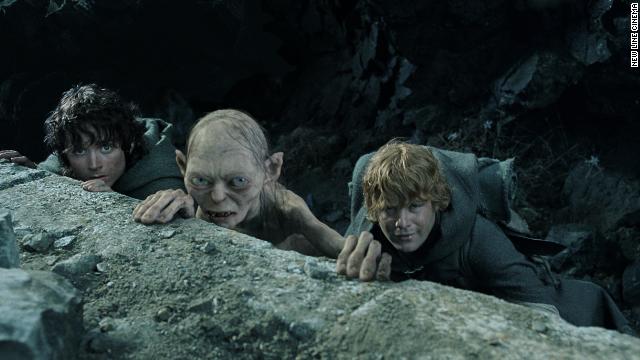 The final film in Peter Jackson's "The Lord of the Rings" trilogy, "The Return of the King," swept all 11 categories in which it was nominated -- including best picture. From left, Elijah Wood, Andy Serkis and Sean Astin play three of J.R.R. Tolkien's characters: Frodo Baggins, Gollum and Samwise Gamgee.
The final film in Peter Jackson's "The Lord of the Rings" trilogy, "The Return of the King," swept all 11 categories in which it was nominated -- including best picture. From left, Elijah Wood, Andy Serkis and Sean Astin play three of J.R.R. Tolkien's characters: Frodo Baggins, Gollum and Samwise Gamgee.  "Million Dollar Baby" is about an old trainer (Clint Eastwood, left, with Morgan Freeman and Hilary Swank) who takes on a female boxer, with unforeseen consequences. The film won four Oscars, including a directing prize for Eastwood, best actress for Swank and best supporting actor for Freeman.
"Million Dollar Baby" is about an old trainer (Clint Eastwood, left, with Morgan Freeman and Hilary Swank) who takes on a female boxer, with unforeseen consequences. The film won four Oscars, including a directing prize for Eastwood, best actress for Swank and best supporting actor for Freeman.  Few best pictures have been as polarizing as "Crash," about the criss-crossing lives of several Los Angeles residents. The film touches on issues of race and justice and stars -- among many others -- Thandie Newton and Matt Dillon.
Few best pictures have been as polarizing as "Crash," about the criss-crossing lives of several Los Angeles residents. The film touches on issues of race and justice and stars -- among many others -- Thandie Newton and Matt Dillon.  Director Martin Scorsese's films were often well-reviewed but couldn't win the big prize, until "The Departed," about a Boston gangster and some corrupt cops. The film stars Leonardo DiCaprio, left, Ray Winstone, and Jack Nicholson, right.
Director Martin Scorsese's films were often well-reviewed but couldn't win the big prize, until "The Departed," about a Boston gangster and some corrupt cops. The film stars Leonardo DiCaprio, left, Ray Winstone, and Jack Nicholson, right. 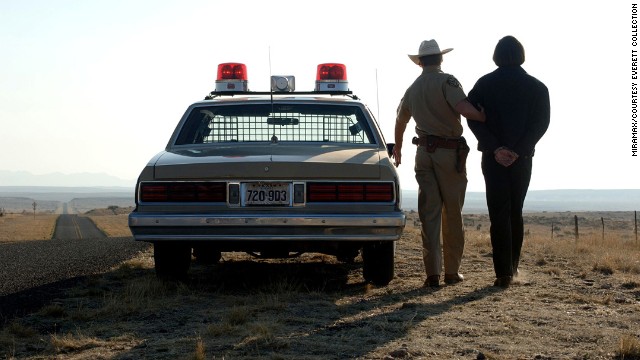 The Coen brothers' grim "No Country for Old Men," about a Texas drug deal gone wrong, won four Oscars. Javier Bardem received a best supporting actor award for his portrayal of the brutal enforcer Anton Chigurh, who carries around a lethal bolt gun and doesn't hesitate to use it.
The Coen brothers' grim "No Country for Old Men," about a Texas drug deal gone wrong, won four Oscars. Javier Bardem received a best supporting actor award for his portrayal of the brutal enforcer Anton Chigurh, who carries around a lethal bolt gun and doesn't hesitate to use it.  Another little movie that paid off big, "Slumdog Millionaire" was slated to go straight to video until its American distributor found a partner. The sleeper film, about a poor Indian man (Dev Patel, left) whose success on "Who Wants to Be a Millionaire" is questioned by a suspicious detective, won eight Oscars.
Another little movie that paid off big, "Slumdog Millionaire" was slated to go straight to video until its American distributor found a partner. The sleeper film, about a poor Indian man (Dev Patel, left) whose success on "Who Wants to Be a Millionaire" is questioned by a suspicious detective, won eight Oscars.  In a David-vs.-Goliath scenario, "Avatar," James Cameron's big-budget box office king, was pitted against "The Hurt Locker," a low-budget film about a bomb disposal unit in the Iraq War. "The Hurt Locker" won six Oscars, including best picture and best director (Kathryn Bigelow, one of Cameron's ex-wives).
In a David-vs.-Goliath scenario, "Avatar," James Cameron's big-budget box office king, was pitted against "The Hurt Locker," a low-budget film about a bomb disposal unit in the Iraq War. "The Hurt Locker" won six Oscars, including best picture and best director (Kathryn Bigelow, one of Cameron's ex-wives). 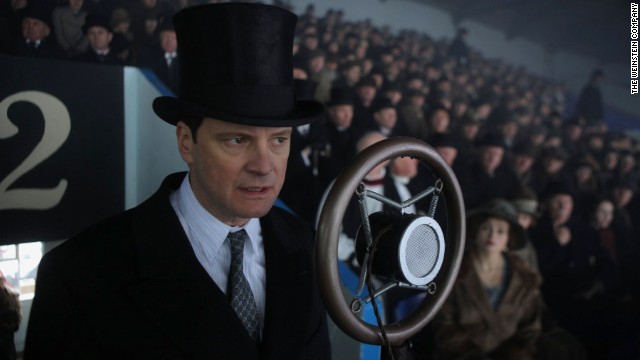 "The King's Speech," about England's King George VI and how he overcame his stutter, won four Oscars, including a best actor trophy for star Colin Firth.
"The King's Speech," about England's King George VI and how he overcame his stutter, won four Oscars, including a best actor trophy for star Colin Firth. 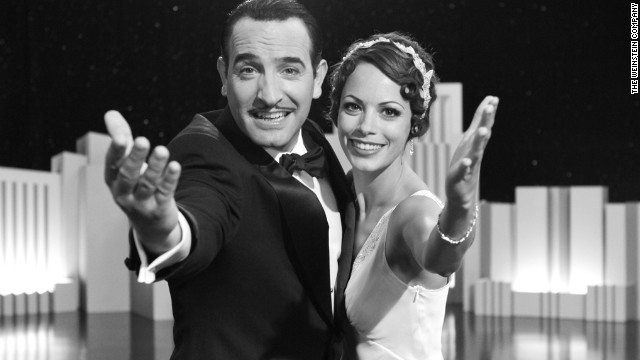 Jean Dujardin and Bérénice Bejo star in "The Artist," the first (mostly) silent film to win best picture since 1927's "Wings." The film, about the fall and rise of a silent film star, won five Oscars.
Jean Dujardin and Bérénice Bejo star in "The Artist," the first (mostly) silent film to win best picture since 1927's "Wings." The film, about the fall and rise of a silent film star, won five Oscars. 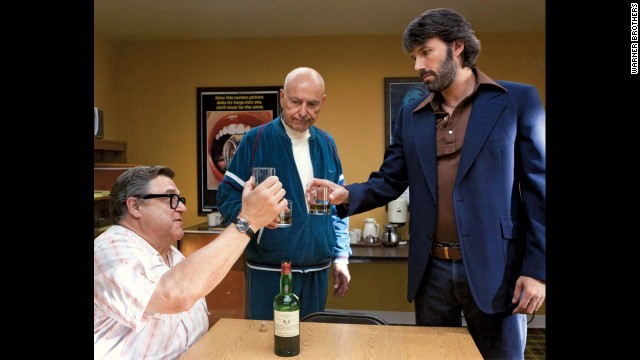 "Argo," based on a 1980 operation to free some of the American hostages during the Iran hostage crisis, won three Oscars: best picture, best adapted screenplay and best film editing. Ben Affleck, right, directed and starred.
"Argo," based on a 1980 operation to free some of the American hostages during the Iran hostage crisis, won three Oscars: best picture, best adapted screenplay and best film editing. Ben Affleck, right, directed and starred. A history of Oscar-winning best pictures
'The Broadway Melody' (1929)
'All Quiet on the Western Front' (1930)
'It Happened One Night' (1934)
'Mutiny on the Bounty' (1935)
'The Great Ziegfeld' (1936)
'The Life of Emile Zola' (1937)
'You Can't Take It With You' (1938)
'Gone With the Wind' (1939)
'How Green Was My Valley' (1941)
'The Lost Weekend' (1945)
'The Best Years of Our Lives' (1946)
'Gentleman's Agreement' (1947)
'All the King's Men' (1949)
'An American in Paris' (1951)
'The Greatest Show on Earth' (1952)
'From Here to Eternity' (1953)
'On the Waterfront' (1954)
'Around the World in 80 Days' (1956)
'The Bridge on the River Kwai' (1957)
'Lawrence of Arabia' (1962)
'The Sound of Music' (1965)
'A Man for All Seasons' (1966)
'In the Heat of the Night' (1967)
'The French Connection' (1971)
'The Godfather: Part II' (1974)
'One Flew Over the Cuckoo's Nest' (1975)
'Kramer vs. Kramer' (1979)
'Chariots of Fire' (1981)
'Terms of Endearment' (1983)
'The Last Emperor' (1987)
'Driving Miss Daisy' (1989)
'Dances With Wolves' (1990)
'The Silence of the Lambs' (1991)
'Schindler's List' (1993)
'The English Patient' (1996)
'Shakespeare in Love' (1998)
'A Beautiful Mind' (2001)
'Lord of the Rings: The Return of the King' (2003)
'Million Dollar Baby' (2004)
'No Country for Old Men' (2007)
'Slumdog Millionaire' (2008)
'The King's Speech' (2010)
 Photos: Oscar-winning best pictures
Photos: Oscar-winning best pictures In the film, an impoverished Scarlett (Vivien Leigh) has a dress made from her mother's curtains in hopes of finagling $300 for taxes from Rhett Butler. It is one of three original gowns worn by Leigh and two reproductions that will be on display in the exhibition. The Ransom Center raised $30,000 in a 2010 online campaign to preserve the outfits, says Wilson, also the center's curator of film.
'Gone With the Wind' still attracts fans, cash and controversy
Memos from David O. Selznick
The exhibit traces the long, arduous process of how producer David O. Selznick adapted Mitchell's best-seller, offering up more than 300 items, including storyboards, casting call sheets, photos, scripts, screen tests, letters from fans and critics alike, audience preview cards, and, of course, memos from Selznick. The exhibit received "generous support" from Turner Classic Movies, which shares a parent company with CNN.
The Ransom Center archives contain a voluminous collection from the producer, whose sons donated more than 5,000 document boxes of material to the research library and museum in 1980.
"That was his management style," Wilson says of Selznick's famous memos that detail his thinking over the three-plus years he struggled to bring the movie to the screen. "It's good for us."
Producer David O. Selznick, left, reveals the casting of Vivien Leigh, Leslie Howard and Olivia de Havilland in January 1939.
"The Making of 'Gone With the Wind' " covers the behind-the-scenes drama that included the search for an unknown to play Scarlett, constant script revisions, the comings and goings of directors, concerns over the authenticity of Southern accents, censorship problems, and controversy over the portrayal of African-American characters.
"Race is absolutely at the center of the film," says Coleman Hutchison, associate professor in the Department of English at the University of Texas who was a faculty adviser to the exhibit.
"It's really shaped how people think about the South and the memories of the Civil War and Reconstruction," he says, noting that it's "outdated at best, terribly racist at its worst."
"Its version of history is compromised," he adds.
Opinion: How slavery haunts today's America
Controversies over race, historical accuracy
Selznick faced pressures over racial issues almost from the beginning, receiving letters from people concerned about the depiction of happy and subservient slaves. NAACP official Walter White urged the producer to name an African-American adviser to ensure the film's historical accuracy, but Selznick resisted, feeling he already had too many advisers.
A blistering editorial in The Pittsburgh Courier, a prominent African-American newspaper, criticized the film's script for including the N-word, predicting it would be worse than "The Birth of a Nation."
Facing pressure from the black press, his staff and movie censors, Selznick decided to remove "the hate word," Wilson says.
"If that word had been in the film, we would be so embarrassed and offended by it that we wouldn't be discussing the film today," he says.
Selznick also eliminated references from the movie that were in the novel regarding the Ku Klux Klan -- specifically when Scarlett gets attacked in an area known as Shantytown. In a memo to screenwriter Sidney Howard, he explained that he had "no desire to produce any anti-Negro film."
In spite of those changes, "Gone With the Wind" remains racially problematic for audiences today, says Caroline Frick, another faculty adviser to the exhibit. Still, Frick says she finds it valuable to show the movie to students in her film classes at the University of Texas.
When her students see the racial bigotry "they physically recoil," the assistant professor says. "It's a good reminder."
Frick, an admitted fan of the film since childhood, calls it "a complicated movie" that also deals with gender, class and regionalism as well as the Civil War and race.
"It brings up a little discomfort in a very beautiful Technicolor package."
"Gone With the Wind's" Walter Plunkett was Hollywood's go-to designer for historical costumes in the 1930s and '40s.
Universality of Scarlett
Wilson, the exhibition curator, sees hunger, war, migration to the cities and the loss of a connection to land as themes central to the heroine's popularity at the time of the movie's first release.
"The story of the making of 'Gone With the Wind' is the story of the Depression, more than the issue of the Civil War," he says.
"A lot of these issues that concerned Scarlett O'Hara also concerned the public."
He says many of the letters Selznick received came from fans pleading to be cast as Scarlett, not because they wanted to be famous, but because they identified so strongly with her.
"Gone With the Wind" is still considered the top movie moneymaker of all time when adjusted for inflation, and the novel is second in popularity only to the Bible, according to a 2014 Harris Poll.
But it's unclear whether Scarlett will retain her hold over popular audiences in the 21st century. Perhaps time has taken a toll on the character the way it has with the 75-year-old dress that symbolizes her so well.
The dress has "a lot of fading and discoloration on the fabric," says Jill Morena, the Ransom Center's assistant curator for costumes and personal effects.
Morena says it's impossible to know how the dress looked in 1939, explaining the Technicolor process altered its appearance. While it seems almost emerald green in the film, it has an olive hue in person, she says.
She says it would have been too risky to touch up the color so "we decided we weren't going to change it."
"It's a strong visual embodiment of the tenacity of Scarlett," Morena says.
"It still lives in the public's imagination."
'Gone With the Wind' actress Alicia Rhett dies at 98
'Gone With the Wind' actress Ann Rutherford dies
No comments:
Post a Comment